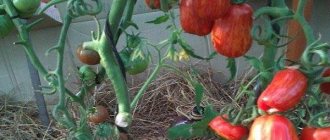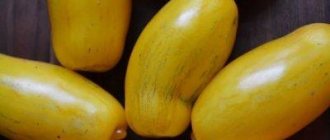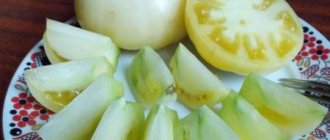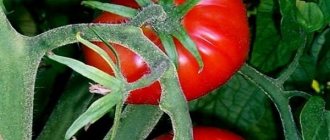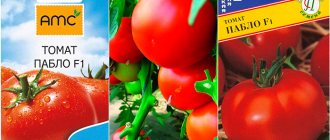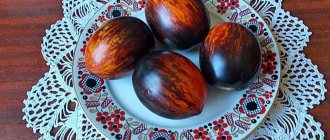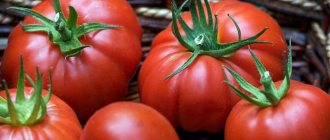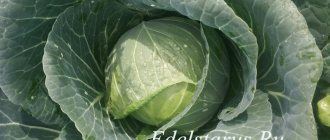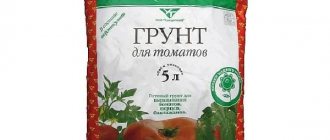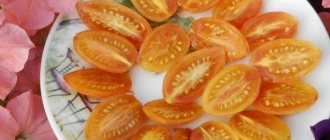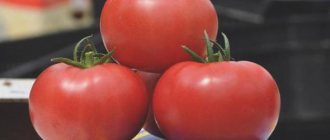Description and differences
The variety received its name for its external similarity with the oriental sweet-sugary fruit, as well as because of its honey taste. There are no particular differences between the subspecies, but the pink tomato has a large amount of sugar in its composition, so it needs more frequent feeding and watering.
Bushes
The root system of "Fig" is well developed and branched, so per 1 sq. m plant no more than 3 bushes so that they do not interfere with each other. Tall, up to 3 m, the bush forms a thick and branching stem.
If the side shoots are not removed in time, a rather wide crown will form. Tomato shoots are heavily pubescent, so they appear greenish-gray. The leaves are dark on top and pale on the underside. The leaf plate is large with carved edges.
Fruit
During fruiting, clusters of fruits are formed on the stems, on average 5 pieces. Externally, the fruits of both subspecies are similar: round, with a large number of ribs, with a slight elongation towards the top, like the fruit after which they are named.
The fruit is multi-chambered with many seeds. The skin is deep pink or just as juicy red, glossy, thin, but can prevent cracking. The pulp of both subspecies of tomatoes is fleshy, with sugar breaks.
Differences in the characteristics and descriptions of tomato fruits in weight: “Pink figs” - from 300 to 600 g, and “Red figs” reach 800 g in weight.
Pink fig tomatoes
Tomatoes Pink figs are suitable for growing in open ground only in the southern regions; in the rest of the territory it is better to cultivate them in a greenhouse.
Description and characteristics of the variety
Mid-season, tall variety. The height of the plant reaches 3 m, so tying is necessary. The bushes are spreading, the stem is strong and massive. On young shoots and leaves, an increased number of glandular hairs is observed, which is why they acquire a greenish-gray tint. The leaf has carved edges, the top has a more saturated color, the bottom is paler.
Each cluster bears from 3 to 5 fruits; on the lower branches the fruits are larger. The bush blooms and bears fruit throughout the season. The yield of 1 bush is 6-7 kg. The weight of the berries is from 300 to 700 g, some samples can reach 1 kg. The tomatoes are large, fleshy, with a lot of ribs. These tomatoes have a large number of seed chambers. The fruits are flat-rounded and have a slightly flattened shape. The skin is thin, but does not crack. During transportation they do not lose their commercial qualities.
Tomatoes can be picked before they are ripe, and they will ripen indoors without losing their taste. The Pink Fig tomato is used for collecting juice for the winter and for preparing salads.
Features of growing the variety
To get a good harvest, you must adhere to the following standards:
- Sowing. Seeds of this variety undergo special treatment before going on sale, so there is no need to soak them in a disinfectant solution. Planting material is laid out in containers with prepared soil and sprinkled with earth. Moisten, cover with polyethylene so that the temperature is kept at 23*C. The best time for sowing is from March 10 to March 20. The seedlings are transferred to a permanent place of growth at the age of 2 months.
- Transplantation to a permanent place. The plant is planted in a greenhouse when it has reached a height of 30-35 cm and has more than 10 leaves. It must be taken into account that the bush will continue to grow throughout the season. Therefore, it is planted with a row spacing of at least 50 cm.
- Stepping and bush formation. Experienced gardeners advise forming a bush with 2 stems. After the second and third clusters appear, the side shoots are removed.
- It is recommended to moisturize using drip irrigation. The Pink Fig variety is quite moisture-loving and loves regular watering. Irrigation should be carried out with warm water, avoiding its contact with the leaves.
- Feeding. Plants of this variety are very demanding of warm climates and fertile soils. Therefore, fertilizers should be applied regularly. It is better to use complex fertilizers. Fertilizers are applied in the evening.
- Disease and pest control. Tomatoes that are cultivated indoors should undergo preventive spraying against fungal diseases. plants are treated with Fitosporin. To combat harmful insects, use a weak solution of potassium permanganate. During the ripening of fruits, they use decoctions and infusions of plants: chamomile, onion peel, celandine, yarrow.
Common indoor ivy - planting and care at home
After watering, to avoid rot, the greenhouse should be ventilated. Dried soil needs to be loosened and weeds removed. Oxygen must constantly flow to the roots of tomatoes, this will have a positive effect on the future harvest.
Advantages and disadvantages of the variety
The Pink Fig tomato has virtually no disadvantages. The disadvantages of this variety include:
- Small voids form between the ribs in the fruit;
- Large fruits often break branches, so tying them to a support is necessary;
- Low frost resistance.
Caring for plants of this variety requires more careful attention, but this pays off with the unusual taste of the fruits and their originality. Arguments in favor of the fact that it is worth trying to grow tomatoes of this variety on your site:
- The berries are large, fleshy, sweet;
- Long fruiting period;
- They retain their presentation for a long time;
- High resistance to diseases;
- Great for making juices and sauces;
- Tomatoes do not lose their taste if you have to pick them from the bush unripe.
Video
Characteristics of varieties
“Fig” is a tall, mid-season variety. The bush grows quickly and bears a lot of fruit, so it needs support and shaping, since the stems can break due to the weight of the fruit. Proper care will keep the fruits from cracking in the full ripeness phase.
What is noteworthy is that the fruits ripen perfectly, being picked at the stage of technical ripeness. These tomatoes are well stored and can withstand transportation and have an excellent presentation. Tomatoes of the “Fig” variety are prolific, the yield of the red and pink subspecies reaches up to 7 kg per bush.
The taste of these tomatoes is very pleasant: light honey notes echo interspersed with fruity taste.
Both tomatoes are universal in use: juice, salad, first and second courses, sauces, any types of winter preparations.
Advantages and disadvantages
The main advantages of "Fig":
- large and sweet fruits;
- bright color and presentation;
- ability to ripen when picked;
- disease resistance;
- versatility in use.
But the main advantage of Fig tomatoes is the high yield of both red and pink subspecies.
The disadvantages include the lack of immunity to cold: the plant is grown in greenhouses and greenhouses, open ground is suitable only in the southern regions.
These tomatoes require careful care: shaping and support are a must.
Gardeners' opinion about the variety
According to reviews, Pink Fig tomatoes fully correspond to the description - they grow large and surprisingly sweet. Some gardeners do not like the voids inside the fruit, but everyone definitely appreciates the taste.
Many people successfully grow this variety for sale: due to its delicious sweet taste and original shape, there is always a demand for it. In addition, dense tomatoes do not wrinkle during transportation, are stored for a long time and ripen well.
Productivity is always high. Sometimes it is even higher than stated - reaches 8 kg (as a rule, this applies to bushes formed into 2 stems).
It has been noticed that the skin of the fruit can be easily removed by hand without pouring boiling water over it. The skin itself is thin, but quite dense. The fruits may crack, but in very rare cases (only a few tomatoes per season).
Features of growing seedlings
To sow seedlings, take garden soil, humus and coarse sand in a ratio of 2:1:1. Sowing is carried out in the second half of March in seedling boxes or separate containers.
The seeds are not buried more than 1 cm; they are sprinkled with soil. The box is placed in a warm, illuminated place; the temperature of the crops should not be lower than 23 °C. It is necessary to carefully monitor the drying out of the top layer of soil, since this plant (both subspecies) is moisture-loving.
During short daylight hours, seedlings need additional artificial lighting during the day.
In the 2-leaf phase, the seedlings are transplanted into a large separate container and from this period they begin to feed. Feeding is carried out in the evening with a complex mineral composition.
In the second half of May, plants that have become stronger, have formed up to 12 strong leaves and have reached at least 30 cm in height are transplanted into greenhouse soil. It must be disinfected by watering it with a solution of potassium permanganate: this is a kind of prevention against fungi.
For Fig tomatoes, it is important to immediately provide support: both pink and red subspecies produce heavy fruits. The weight of the brushes falls on the ground, which can lead to blackening of the fruit. Another trouble is the fragile stems; they break off from the weight of the Fig.
Features of agricultural technology of the variety
Tomato Figs are cultivated in seedlings. Seeds are planted in the 2nd or 3rd decade of March. Transplant seedlings into the ground - at the end of May, on the 60-65th day. The recommended distance between plants in a row is 40-50 cm, between rows - about 70 cm.
Advice. For 1 sq. m of greenhouse bed, no more than 3 bushes of this tomato are planted.
Gardeners have established experimentally: the crop exhibits the best yield when a bush is formed with 1-2 stems. The plant must be fed with potassium- and phosphorus-containing mixtures at least 4 times during the summer. Alternate root and foliar application. You will also need organic fertilizers. Think about support for a tall tomato in advance. Trellis will do.
Tomato care
Caring for the crop consists of watering, soil care and fertilizing.
The main rule when growing Fig tomatoes is the formation of a bush. As already mentioned, both pink and red subspecies have heavy clusters with fruits, under the weight of which the stems can simply break.
During fruiting, it is better to use the drip irrigation method, since uneven distribution of moisture can have a detrimental effect on the future harvest. Do not forget about loosening the soil, saturating the root system with oxygen and weeding from weeds.
Plantings require at least four meals a day; the complex must contain potassium and phosphorus, which give the plant an incentive to form full-fledged ovaries and, accordingly, fruits.
Diseases and pests
To avoid infection with fungal diseases, the soil in the greenhouse is disinfected before planting - either with potassium permanganate or a solution of copper sulfate. During the growth process, the bushes are sprayed with Fitosporin solution.
You can protect plantings in a greenhouse from pests using folk remedies - decoctions of herbs such as onion skins, celandine, medicinal chamomile, and marigolds.
If the situation is too advanced, insecticides are used, but not more than once every 3 days.
By planting the Fig tomato variety on your plot, you will get a tomato of universal use: tasty juice, rich and bright; preservation both individually and assorted; sauces, seasonings for many dishes, as well as a tasty product on its own.
Prevention and control of diseases
In greenhouse conditions, tomatoes can be affected by late blight, rot, and brown spot. To avoid late blight, you need to control the humidity level - regularly ventilate the greenhouse.
Simple prevention of fungal diseases is done with the help of manganese or ash - water the soil with solutions instead of ordinary water.
When affected by brown spot, plants are sprayed with oxychome or foundationazole. Adding calcium to the soil (chalk, lime, eggshells) and spraying with calcium nitrate will help to avoid blossom end rot.
In addition, sweet large-fruited varieties are very attractive to insect pests. Tomatoes must be frequently inspected and removed from insects manually (washed with soap and water), and in case of serious damage, treated with insecticides.
Tomato Fig pink
Variety - “PINK FIG”. Tomatoes from Fyodor.
Tomatoes with PINK FIG….
Characteristics of the variety
General characteristics of the Fig variety:
- average ripening period - fruits reach technical maturity in 110–150 days from the moment of emergence;
- bushes of a low-growing type, reaching a height of 3 m;
- the ground part is spreading, with a moderate amount of greenery - needs pinching;
- the shoots are densely fleecy, this gives them a greenish-gray tint;
- the leaves are large with feathery edges, dark green on the outside, pale on the inside;
- flowers of a simple type, collected in brushes of 3–5 pieces;
- the fruits are round, with pronounced ribbing, slightly elongated upward;
- fetal weight 300–800 g depending on the subtype;
- the inside of the fruit is multi-chambered, with a large number of seeds;
- the peel is glossy, rich in color, dense, not prone to cracking;
- the pulp is similar in color to the peel, fleshy, sugary, without acid;
- the yield is high - 7 kg can be harvested from one bush;
- resistant to nightshade diseases and pests if preventive measures are taken.
There are 2 subspecies of the variety:
- Red figs;
- Figs are pink.
The subspecies differ in the color of the fruit and their size: pink tomatoes weigh 300–600 g, red tomatoes – 400–800 g. Pink figs are more demanding in care. Otherwise, the subspecies are no different.
Tomatoes “Pink Figs” and “Red Figs”: description of varieties
| Variety name | Figs |
| general description | Mid-season indeterminate variety |
| Originator | Russia |
| Ripening period | 100-105 days |
| Form | Tomatoes are flat-round, strongly ribbed, shaped like figs |
| Color | Red or pink |
| Average weight of tomatoes | 300-800 grams |
| Application | Universal |
| Productivity of the variety | 6-7 kg per bush |
| Features of cultivation | Standard agricultural technology |
| Disease resistance | Resistant to major diseases |
Figs are a mid-season, high-yielding variety.
The bushes are indeterminate and can reach 3 m in height. The plants are spreading, with moderate formation of green mass, they require careful formation and obligatory tying. The fruits ripen in small clusters of 3-5 pieces; on the lower branches the fruits are larger. The yield is good; 6-7 kg of selected tomatoes can be harvested from one plant.
Among the main advantages of the variety:
- very tasty, sweet fruits;
- good yield;
- unusual shape of tomatoes;
- variety of shades;
- versatility, it is possible to prepare various dishes or canning;
- good seed germination;
- resistance to major diseases.
The disadvantages of the variety include:
- thermophilicity;
- a tall bush needs shaping;
- Tomatoes need strong support; horizontal or vertical trellises are preferable;
- the need for frequent feeding.
Fruit characteristics:
- The fruits are large, weighing from 300 to 800 g.
- The tomatoes are flat-round, highly ribbed, shaped like a fig.
- The pulp is juicy, moderately dense, with a large number of seed chambers.
- The skin is thin, well protecting the fruits from cracking.
- The taste of ripe fruits is very pleasant: rich, sweet with light fruity notes.
You can compare the weight of the fruits of this variety with other varieties in the table below:
| Variety name | Fruit weight |
| Figs | 300-800 grams |
| Pink king | 300 grams |
| Yellow giant | 400 grams |
| Inseparable hearts | 600-800 grams |
| Orange Russian | 280 grams |
| wild Rose | 300-350 grams |
| Thick cheeks | 160-210 grams |
| Garlic | 90-300 grams |
| Newbie pink | 120-200 grams |
| Cosmonaut Volkov | 550-800 grams |
| Nobleman | 300-400 |
There are several varieties of Figs with fruits that are red, pink or honey-yellow. They are similar in taste and other characteristics.
The fruits are universal, suitable for preparing various dishes, as well as canning. Small specimens are very beautiful as part of assorted vegetables. Ripe tomatoes produce sweet, thick juice with a rich taste.
Read more about diseases of tomatoes in greenhouses in the articles on our website, as well as about methods and measures to combat them.
You will also be able to get acquainted with information about high-yielding and disease-resistant varieties, about tomatoes that are not at all susceptible to late blight.
Advantages and disadvantages of the variety
Growing the Red Fig variety has positive and negative sides.
- Pros of the Red Fig tomato:
- high-quality rich harvest;
- versatility in use;
- high germination rate of seed;
- good resistance to nightshade diseases.
- Disadvantages of the Red Fig tomato:
- demanding care;
- the need to provide a special microclimate;
- impossibility of growing in open ground for most regions.
Sowing seeds for seedlings and growing them
The variety is thermophilic, so attention is paid to organizing the microclimate. The variety is suitable for growing in greenhouses. Planting in open ground is allowed only in warm regions.
Conditions
For a good harvest, the Red Fig tomato needs to create a special microclimate:
- lighting – diffused, at least 10 hours;
- temperature before emergence – +23. +25 °C;
- temperature after germination – +15. +18 °C;
- soil moisture – 70–80%;
- air humidity – 60%.
Features of sowing
The timing of sowing seeds depends on the microclimate of the greenhouse:
- for heated ones - in early February;
- unheated - from March 15.
Seed treatment
The seeds do not need additional processing. Seed material undergoes the necessary procedures before being released for sale.
Soil preparation
Soil preparation begins immediately after harvesting. There is not much space in greenhouses, so it is not always possible to follow the rules of crop rotation. After the crop is harvested, remove 15 cm of the top layer of soil and replace it with a new one. The soil should be loose, well permeable to moisture.
It is mixed in equal proportions from:
- peat;
- manure;
- garden soil;
- coarse sand.
The mixture is disinfected by calcination in the oven, distributed around the entire perimeter of the greenhouse, disinfected with a 1% solution of copper sulfate and loosened to a depth of 20 cm. A week later, superphosphate is added at the rate of 30 g/sq. m.
For seedlings, you can take universal soil for nightshades or mix it in proportions 2:1:1:
Sowing technology
Before sowing, the planting containers are treated with copper sulfate and dried. The soil placed in the container is leveled, slightly compacted and moistened. Sow in rows 0.5 cm deep with a step between them of 5 cm. The seeds are laid out in rows at a distance of 2–3 cm and sprinkled with dry sand on top. The surface of the box is covered with polyethylene or glass. This will maintain optimal humidity and speed up the emergence of seedlings.
During the germination phase, the seeds do not need lighting, so the boxes are placed in dark rooms where a stable temperature is maintained. The soil is moistened with a spray bottle as needed. Every day the cover is removed for a while to ventilate the soil and assess its condition. After germination, the cover is removed completely and the seedlings are moved to a well-lit place.
Timing and planting of seedlings
With the appearance of 2–3 full-fledged leaves, the seedlings are transplanted into separate containers, having previously rejected the weak shoots. Considering that the plants grow immoderately, when picking, it is necessary to bury the main stem 1/3 of the length into the ground. The final transplantation is carried out 60 days after the emergence of seedlings. In heated greenhouses, tomatoes can be planted all year round, in unheated greenhouses - from May 15.
How to grow seedlings
The timing of sowing seeds depends on the region and method of growing tomatoes. When planting in a greenhouse, seeds are sown two weeks earlier.
In most cases, seeds are sown in March. In the northern regions of the country - in the first half of April.
Preparation of planting material
Before planting seeds, they must be prepared. Planting material is disinfected and soaked in a growth stimulator.
Seed preparation methods:
- Several types of compounds are used to disinfect seeds. For example, solutions of potassium permanganate (1 part potassium permanganate and 100 parts water), soda (0.5 tsp soda and 100 ml water), aloe (1 part aloe juice and 1 part water). The seeds are soaked in potassium permanganate for half an hour, and in aloe and soda for a day.
- After disinfection, the seeds are washed with running water and dried with a paper towel.
- To stimulate growth, pieces of cloth in which the seeds are wrapped are moistened with the solution. The fabric with the seeds is placed in a plate, covered with film and placed in a warm place for a day. Epin, Kornevin, Silk, Zircon, and Sodium Humate are used as growth stimulants.
Advice! Make sure the quality of the planting material. Check the expiration date of the seeds and soak them for half an hour in salted water. Floating seeds are considered unusable.
Selection of containers and soil
For sowing seeds, use special or homemade containers. They should be wide, but not deep.
Small 300 ml pots are suitable for picking.
The basis of the soil mixture for tomatoes is chernozem and humus. To lighten the composition, sand, sawdust or crushed coconut fiber are added to it. To improve the soil, it is mixed with ash and Fitosporin.
Purchased mixtures are also used. Select soil “for tomatoes and peppers.”
Advice! Experienced gardeners recommend using soil for seedlings taken from a greenhouse. It is believed that this will make it easier for tomatoes to take root after transplanting to a permanent location.
To disinfect the soil, it is calcined in the oven, watered with boiling water or a solution of potassium permanganate. The containers are soaked for half an hour in a strong solution of potassium permanganate or in boiling water.
Sowing seeds
In the prepared soil, make grooves at a distance of 2 cm from each other. Their depth should be from 1 to 2 cm. Seeds are placed in the recesses.
The seeds are sprinkled with earth on top. The soil is moistened using a spray bottle with warm water. The containers with seeds are covered with film or glass and placed in a warm place. At the right temperature (23-25 degrees), the seeds will germinate in 3-5 days.
Seedling care
The rules for caring for seedlings are quite simple. By following them, you will get healthy and strong plants:
- After the seeds germinate, the containers with tomatoes are placed in a well-lit place. The film is not removed for another 10 days. Regular ventilation will help prepare fragile plants. In March, the seedlings will not receive enough sunlight, so gardeners advise using fluorescent lamps.
- Before the seeds germinate, the soil is moistened with a spray bottle as it dries. If mold appears on the soil, the affected layer is removed, and the seeds with the remaining soil are watered with a weak solution of potassium permanganate.
- After sprouting and picking, water the tomatoes at the root so that water does not get on the greens. If the plants begin to wither and turn yellow, you need to reconsider the watering schedule. This problem occurs both with insufficient amount of liquid and with excessive watering.
- During the entire period of growing seedlings, they are fed three times. The first - two weeks after picking, the second - three weeks after the previous application of fertilizers, the third - three days before planting the tomatoes in a permanent place. Complex fertilizers and vermicompost are best suited for seedlings.
- Hardening off tomatoes will help them settle down in a permanent location. Such procedures begin two weeks before planting seedlings. To do this, the plants are taken out into the fresh air, gradually increasing the duration of the air baths.
Tomato Yablonka of Russia: description of the variety, photos, reviews, who planted it, characteristics of the fruit, advantages and disadvantages
Tomato care
When growing in a greenhouse, you will need to pay more attention to feeding. Without it, plants will quickly draw nutrients from the soil and stop growing. During the flowering period, the plants are shaken to ensure pollination. They also reduce air humidity to 50% and increase daylight hours to 13–18 hours. Good lighting promotes the formation of powerful plants with short internodes, which simplifies care.
Fertilizer
About 6 feedings are carried out per season:
- 3 root using organic matter;
- 3 foliar using mineral fertilizers containing potassium and phosphorus.
The first feeding is carried out at the time of transplanting the seedlings. After transplantation, fertilization is carried out 7–10 days later, when the plants get stronger and take root in the new place.
Use liquid mullein with the addition of dolomite flour, 400 ml per plant. After 10 days, spraying is carried out using potassium monophosphate - 10 g / 10 l of water. After flowering, yeast infusion with compost is added to the soil. For 10 liters of compost add a package of dry yeast + 1 tbsp. l. Sahara. Leave for 1–2 days and dilute 1:1. Apply 1 liter to each bush.
After 10 days, spray with monophosphate. During the fruit filling phase, 10–14 days after spraying, you can again use yeast fertilizer, only without compost. Dilute 1 tbsp in warm water. l. sugar and a package of dry yeast (25 g), leave for 2 hours. The resulting mixture is applied to the soil at the rate of 2 liters per plant.
Watering
To maintain soil moisture, it is better to organize drip irrigation in the form of a strip system distributed along the entire perimeter of the plantings. The application of liquid is combined with fertilizing. For example, they fertilize in the morning and water in the evening. Each plant should have 3–4 liters of water.
Stepsoning
Pinching is a necessary procedure when growing tomatoes of this variety. It involves the removal of not only excess stepsons, but also flower brushes. The first stepsons are formed in the axil between 5–6 leaves, during the period after picking the plants into the greenhouse. As soon as they reach a length of 5 cm, they are removed by carefully pinching them off with your hands. In the future, pinching is carried out every 10–14 days. It is more convenient to form a bush into 1 stem.
This formation involves the following activities:
- removal of all side shoots throughout the plant's life cycle;
- removal of the first 2 flowering clusters - manipulation allows you to increase the number of inflorescences and speed up the fruiting process;
- removal of clusters with fruits - carried out at the beginning of the fruiting phase;
- removing all leaves located in the lower part of the bush, up to the first flowering cluster;
- pinching the growing point a month before harvesting the last fruits, leaving 2-3 leaves free from flowers at the top.
In parallel with pinching, the heavy branches are tied to the trellis.
Loosening the soil and weeding
The soil needs to be loosened after each watering. This prevents moisture stagnation and enriches the root system with oxygen. In parallel with loosening, weeding is carried out. Loosening is carried out with a sabot. In the row-spacings the aeration depth is 10 cm, directly in the hole – 5 cm.
Protection from diseases and pests
The variety's resistance to diseases and pests does not exclude their occurrence if care is insufficient. When infected with fungal diseases, you need to act immediately, as the fungus spreads quickly indoors and can destroy the entire crop. Affected parts of plants are removed and burned outside the site. Removal is carried out with a clean, disinfected instrument, which is additionally processed after each plant. Air humidity is reduced to 50%.
Then the bushes are treated with Oxychom. 20 g of the drug is diluted in 10 liters of water. Solution consumption – 2 liters per sq. m. The last treatment before harvesting can be carried out 4 days before. When pests appear on tomato plantings, use a 3% solution of Bordeaux mixture.
Preventive measures to prevent the development of diseases and the spread of pests:
- loosening the soil;
- compliance with humidity conditions;
- preventive spraying with a 1% solution of Bordeaux mixture 3 times per season, starting from the 7th day after transplanting into the greenhouse;
- thorough harvesting and replacement of the top layer of soil.
Growing tomatoes
The seedlings are transplanted to a permanent location after the soil has warmed up. In most regions this occurs in the second half of May or early June.
Planting tomatoes in a permanent place
First of all, you need to choose a suitable location for your tomato beds. It should be well lit and protected from the winds. You cannot use areas of the garden where nightshade crops have grown over the past three years.
They have been preparing the area for tomatoes since the fall. The beds are dug up and freed from plant debris. Organic fertilizers are added to the soil, for example, chicken droppings, mullein, potato peelings.
Be sure to check the acidity of the soil using litmus paper. If the indicators are elevated, alkali is added to the soil.
In the spring, before digging, mineral fertilizers, including phosphorus and potassium, are scattered over the beds. Then the beds are dug up and cleared of weed roots.
The holes are dug in rows, the distance between them is at least 60 cm. A gap of 50-60 cm is maintained between the holes. Per 1 sq. m there should be no more than 3-4 plants.
A tablespoon of stove ash is poured into each hole. The plants are removed from the pot and, together with a lump of earth, placed in a recess. Then the holes are covered with earth and watered with warm water.
Tomato care
Pink fig tomato bushes are formed into 1 or 2 stems. In the first case, the fruits will be larger and they will ripen faster, and in the second there will be more of them. In the afternoon, remove all excess shoots and yellowed leaves from the bottom of the stem.
Water the tomatoes as the soil dries out. Watering should be plentiful, but not frequent.
Pink figs are picky about soil composition. The plants are fed four times per season. Foliar fertilizing is also applied.
Mineral fertilizers alternate with organic ones. Purchased complex formulations are often used. Some gardeners prefer to prepare natural fertilizers themselves.
Fertilizer recipes:
- Organic mix. For 5 liters of water, take a glass of mullein and chicken droppings. The composition is thoroughly mixed and allowed to brew for 24 hours.
- Compost. To prepare it, pour a full bucket of fresh grass (without compacting it), add half a glass of ash and lime and 1 tbsp. l. carbonic acid dimide. The mixture is poured with water and allowed to brew for two days.
- Enriched herbal tincture. Finely chop the grass into a bucket and fill it with water. The mixture is allowed to ferment for 14 days, after which it is filtered and diluted with water in a ratio of 2/1. Add a glass of ash and mullein to the resulting composition.
- Fertilizer made from coffee grounds. The used coffee grounds are dried and placed under the roots of the plants. After this, they are watered with warm water.
- Yeast fertilizer. 2 packs of “live” yeast are poured into 5 liters of water. Add 4 tbsp to the composition. l sugar. When the mixture begins to rise, add another 2 liters of warm water.
Foliar feeding is applied every two weeks. Tomatoes are sprayed with the following compounds:
- add 1 tsp of urea to 10 liters of water;
- Add 1 teaspoon of urea, boric acid and copper sulfate to 10 liters of water.
Harvesting time and storage rules
The variety has a long fruiting period, so the last fruits are harvested in September, and the first at the end of June. Tomato harvesting begins when they are not yet fully ripe. The fruits are picked along with the cuttings. The most mature specimens are harvested first.
After harvesting, the tomatoes are sorted by degree of ripeness and placed in containers lined with straw in a single layer. Store in well-lit rooms at a temperature of +20 °C. Green tomatoes reach maturity in 10–15 days. In total, tomatoes are stored for 2-3 months.
The Red Fig tomato variety is more suitable for growing indoors. It has an unusual appearance and high taste. It is demanding in care, but the costs of labor and money are compensated by the quality and quantity of fruits.
general information
The Red Fig tomato was bred in 2012, the originator is the seed company Gavrish (Russia). The variety is suitable for growing in greenhouses and open beds.
There are three varieties of this variety of tomatoes: red, yellow and pink fig tomato. They differ only in the color of the fruit, their size and slightly in taste. The yellow variety only appeared last year and has not yet become widespread.
Ask and receive useful advice from professional gardeners and experienced summer residents.>>
Pink Fig tomatoes and other varieties of the variety belong to the indeterminate type, that is, with unlimited growth. It must be limited by pinching the tops of the stems, otherwise the upper clusters will not have time to ripen, but the strength will be taken away from the plant. In open ground, it is recommended to do this at a height of 1.7-1.8 m, and in greenhouses it can be allowed to grow up to 2 meters.
Regular pinching is also required, the optimal formation of a tomato bush is 1 or 2 stems maximum. This way you can get an excellent harvest, and the plant will be well ventilated, which is the main prevention of diseases. Without shaping, the bush will have a crown up to 2 m in diameter.
High growth and an impressive harvest of tomatoes require a well-developed root system, so the plants should be planted at a distance from each other. Optimally – 3 bushes per square meter.
The Red and Pink Fig tomato varieties have a very impressive appearance of the bush: the heavily pubescent stems seem thick and bluish, the leaves are large, gray-green below, dark emerald above. The edges of the leaves are heavily indented and cover the fruits well from the scorching sun; there is no need to tear them off.
The stems are not very thick, they need support and garter, preferably under each brush or at least through one.
Fruit clusters begin to form above the 5th leaf, each most often containing 5 fruits of different sizes. Fig tomatoes are characterized by a high degree of plant self-pollination - even in a greenhouse, in the absence of insects, all flowers produce ovaries.
The yield of the variety is quite high - 7-8 kg of tomatoes per bush. In a greenhouse, per square meter of area you can get 25-27 kg of excellent tomatoes.
The variety belongs to the mid-early ripening period - the first fruits will become ripe in 100-110 days.
Care
Plants need to be fertilized regularly
Immediately after transplanting, tomatoes are sprayed with copper oxychloride or copper sulfate. After about a week, the seedlings are tied up.
The bush is formed into 1 or 2 stems: the stepsons are broken off, the lower leaves are removed. Heavy clusters are also tied up so that the fruits do not break the stems and fall to the ground. Double flowers must be removed.
():
The appearance of double flowers in large-fruited varieties is quite common. It's called fasciation. From such a double flower grows a large but ugly fruit, which retards the development of other fruits.
In cool weather, watering is done once every 10 days, in hot summer - 1-2 times a week. Water with warm water in the morning or evening. After watering, be sure to ventilate the greenhouse, mulch or loosen the soil.
The beds are regularly weeded as weeds appear. Tomatoes are fed every two weeks, alternating organic fertilizers with mineral ones.
Description of Fig tomatoes with photo
The appearance of the fruits of this variety is very original - these are large tomatoes with an elongated top and ribbed sides. They look like the fruits of a mulberry tree - hence the name Fig.
The color of tomatoes is bright red, deep pink or pale yellow. The skin is thin but durable, protects the fruit from cracking and ensures good storage and transportation. Their flesh is the same color, fleshy, very juicy, and has a sugary edge.
Varieties vary in weight:
- Pink Fig tomatoes produce tomatoes weighing from 300 to 600 grams, this is confirmed by photos and reviews from gardeners;
- yellow fig fruits are similar in size, but they are more round in shape;
- the red variety is larger-fruited - individual tomatoes reach a weight of 800-900 g.
And one amateur vegetable grower in 2021 grew a real giant tomato of this variety - weighing 1.56 kg.
The Pink and Red Fig tomato has a multi-chambered fruit and many seeds. But they are small. Tomatoes collected at the technical ripeness stage ripen well. They acquire their own color and at the same time become sweet.
Fig tomatoes are universally used; they are eaten fresh and grown for processing into juice, ketchup, paste, and use in salads. The taste is very harmonious, with honey and fruit notes.
Farmer reviews
Feedback from farmers about the tomato is positive. Gardeners from different regions are happy to grow this variety on their plots.
Inga Krivyakina, Sochi: “I’ve been growing pink figs for two years now. I tried the yellow and red varieties of this series. The tomatoes are tasty, meaty and unusual. The largest fruit I managed to get weighed 760 g. I form bushes into 2 stems. From 1 sq. I’m collecting several buckets.”
Denis Zaitsev, Voronezh: “This year I tried to grow pink figs in a greenhouse for the first time. I fertilized regularly, but did not treat the plants with chemicals. The tomatoes didn't get sick. I'm happy with the harvest. I like both the taste and the unusual shape of the fruit. I want to try yellow figs.”
Advantages and disadvantages of the variety
As is clear from the above, the advantages of this variety are:
- high productivity;
- excellent taste and commercial quality of tomatoes;
- ripening when picked.
Among the shortcomings, vegetable growers highlight only the lack of cold resistance, so figs are planted in open ground only in the southern regions. Even in the central part it is necessary to use greenhouses and greenhouses.
The downside is the need for very careful care - pinching every 10 days, periodic gartering, regular watering and fertilizing.
Fig tomatoes are often affected by pests and diseases - their resistance is average, so high-quality prevention is required, and at the onset of the disease, treatment with chemicals.
Growing and care
Standard care recommendations for tall tomatoes:
- Sowing seeds for seedlings - 60-65 days before planting in a permanent place. Branded tomato seeds Red and pink figs from Gavrish do not need processing, they have already undergone all pre-sowing preparation.
- The seedlings grow quickly and will stretch out if there is insufficient lighting, so it is worth putting up small supports at this stage.
- When planting, it is recommended to bury the stems or dig them up lying down.
- The support is installed immediately after planting and the stem is tied.
- In a few days - the first stepson.
- To stimulate flowering and fruit set, treatment with a solution of boric acid and ash is recommended: stir 2 liters of ash and 10 g of boric acid into 10 liters of water. Let it sit for an hour, then drain the sediment and perform foliar treatment.
- During the growing season - at least 2-3 fertilizing and preventive treatments against diseases. The best complex fertilizers are “Kristalon”, “Agromaster”, “Kemira”.
- It is very important to adhere to a moist regime - the soil under the bushes should not dry out. It is best to mulch the plantings.
Sources:
https://agronomu.com/bok/4803-urozhaynost-i-opisanie-sortov-tomatov-inzhir-krasnyy-i-rozovyy.html https://fermer.blog/bok/ogorod/tomaty/sorta-tomatov/determinantnye -tomaty/1376-sort-tomata-inzhir-krasnyy.html https://sovusadba.ru/ogorod/pomidory/opisanie-tomatov-serii-inzhir-rozovyj-krasnyj-i-zheltyj.html
